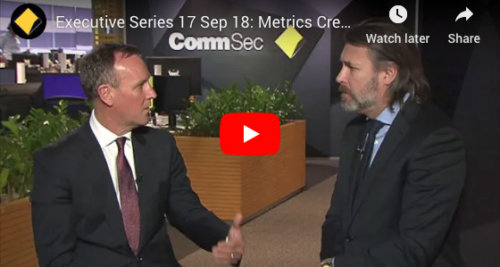Why private credit is popular with super funds and income investors
The banks’ retreat from the commercial property sector has opened up opportunities for private lenders to fill the capital void – and on highly attractive returns for investors relative to the risks incurred.
Also known as private debt, private credit involves directly negotiating a loan to a corporate borrower, or a specific project, on behalf of a group of investors.
While the lending spans multiple sectors, commercial real estate is easily the biggest.
Financial data house Preqin estimates the global private credit market at $US1.5 trillion (around $A2.27 trillion), with Australian lending approaching $200 billion.
Private credit has been popular with both large global players and high-net-worth individuals and now is attracting the attention of the large super funds that manage trillions of dollars of retirement savings.
Cbus was an early mover, providing liquidity to construction projects during the pandemic. The country’s biggest super fund, Australian Super, recently said it intended to triple its private credit exposure – currently $7 billion – “in coming years”.
Now, industry fund Rest has invested some of its $85 billion under management via private credit specialist Metrics Credit Partners’ wholesale vehicle, the Real Estate Debt Fund (REDF).
Metrics is one of the largest private credit investors in the Australian real estate sector, with $A11.3 billion of the firm’s total assets under management of around $20 billion invested in the sector.
Strong results expected
Investments are weighted to large-scale residential developments, especially in western Sydney, as well as hotels and industrial warehouse developments.
“With its attractive risk-adjusted return profile, we expect REDF will deliver strong results to Rest members,” says Rest chief investment officer Andrew Lill.
Given the almost daily reports of property developers getting into strife, investors such as super fund members might query the wisdom of being exposed to real estate debt.
According to Metrics managing partner Andrew Lockhart, such concerns overlook the privileged position of debt in the capital hierarchy – and the ability of private lenders to demand detailed confidential financial and operational data from the borrower.
“As a lender, you can take appropriate security over a borrower or project. For a development project, funds are only released as the project is completed,” he says.
Lockhart notes that senior secured creditors are top of the queue in the event of default, with first dibs over the project’s tangible assets.
Next in line are “mezzanine” or subordinated shareholders, while equity holders are the lowest-ranked.
The “unique characteristics” of private credit mean that investors can receive regular income, even during market turmoil.
In contrast, share dividends can be lowered at the whim of management or cut altogether when conditions sour.
As with a bank lender, a private creditor receives fees (such as establishment charges) and interest at defined times, with a stipulated maturity.
Unlike fixed-rate corporate bonds, private loans are based on a floating base rate such as the bank bill swap rate, plus a margin to reflect the quality of the borrower.
The “floating” aspect means investors’ returns are adjusted if market rates rise.
To protect against the opposite risk of eroding income from interest rate falls – a likely scenario in the next couple of years – lenders will often negotiate a floor base rate.
Current private loan returns are in the low to mid double digits, depending on the status of the borrower in the creditors’ pecking order.
Metrics also may take an equity – or quasi equity – position in a project, with expected returns of 15 per cent- plus commensurate with the higher risk.
Minimising risk
Lockhart says involvement at a property’s development stage is usually less risky than investing in a vehicle such as a real estate investment trust exposed to long-term rental and valuation trends.
But dangers such as construction and delivery delays, slow sales or defaults on off-the-plan purchases need to be carefully navigated – and that’s where a skilled credit manager comes to the fore.
“Our role as a lender is to understand these risks and seek ways to mitigate and reduce them while charging an appropriate margin,” Lockhart says.
Fundamentally, he says, private credit is a defensive asset.
“The lender takes all of the security, imposes all of the protections and provides diversification to lower risk,” he says.
“Real estate debt is a means to provide investors with access to capital stable, lower risk and attractive income.”
Other News
Metrics response to ASIC’s report on Advancing Australia’s Evolving Capital Markets
Attributable to Metrics Group CEO and Managing Partner, Andrew Lockhart: Metrics Credit Partners (“Metrics”) welcomes ASIC’s roadmap to promote strong,…
Livewire Interview – Why Private Debt remains a compelling opportunity
At a time where seemingly everything is in a bull market, thoughts inevitably turn to what happens next and how…
INSIGHTS
MCP Income Opportunities Trust (MOT) lists on ASX
Sydney, 29 April 2019: The Trust Company (RE Services) Limited (ABN 45 003 278 831) (Responsible Entity) is the responsible…
MCP Master Income Trust wins Lonsec Listed Fund Award
The award came a year after MXT was listed on the Australian Securities Exchange






